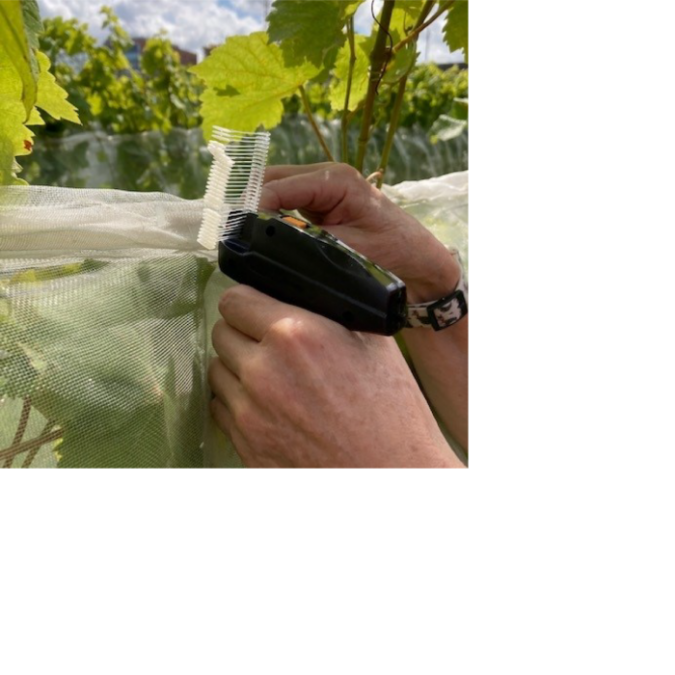Amsterdam urban vineyard Wijn van Bret uses biodegradable textile pins!
Why should a vineyard use textile pins? A question that raises many eyebrows. The link between a vineyard and textile pins may not be obvious, but these attachments have enormous added value. A perfect example of how our well-known products can be used in an original way.

Biodegradable textile pins in an urban vineyard, what is their added value?
Have you always dreamed of a vineyard but can't let go of the city? Amsterdam urban vineyard of Bret brings the experience of greenery to the city. The whole cycle of collective wine production in your personal region, that's what it's all about. Contribute actively yourself? You can! Take part in the gardening, become involved in the vinification* of the wine or take part in a winemaking course.
(*Don't panic, we also had to look for the definition. To put it simply, vinification is the process of turning grape juice into a bottle of wine.)
But why does a vineyard come to us for biodegradable textile pins? “In August, when the grapes are ripening, nets are stretched over the grapes to protect them from the voracious appetites of birds and insects,” we were told. “These nets are secured with textile pins, which were the standard plastic textile pins until recently. When the nets are removed, parts of the attachments unintentionally end up in the environment. And it couldn't go on like this. The new type of attachments are made from a proprietary blend of polypropylene, specifically designed to biodegrade in less than a year when in contact with soil and exposed to sunlight.”
Another step further for Wijn van Bret in making the biodiversity of the vineyard more sustainable, in which Marisan has proven to be a pleasant partner to think along!
Curious about how you can use our well-known products in an original way?
We like to think along with you.